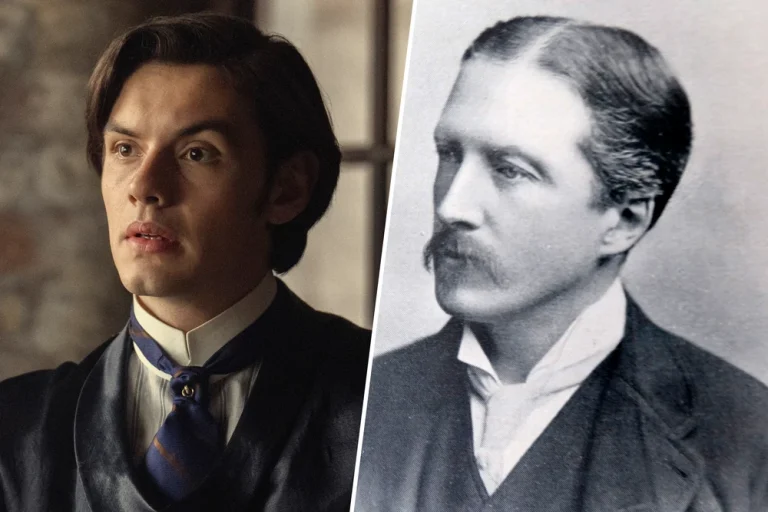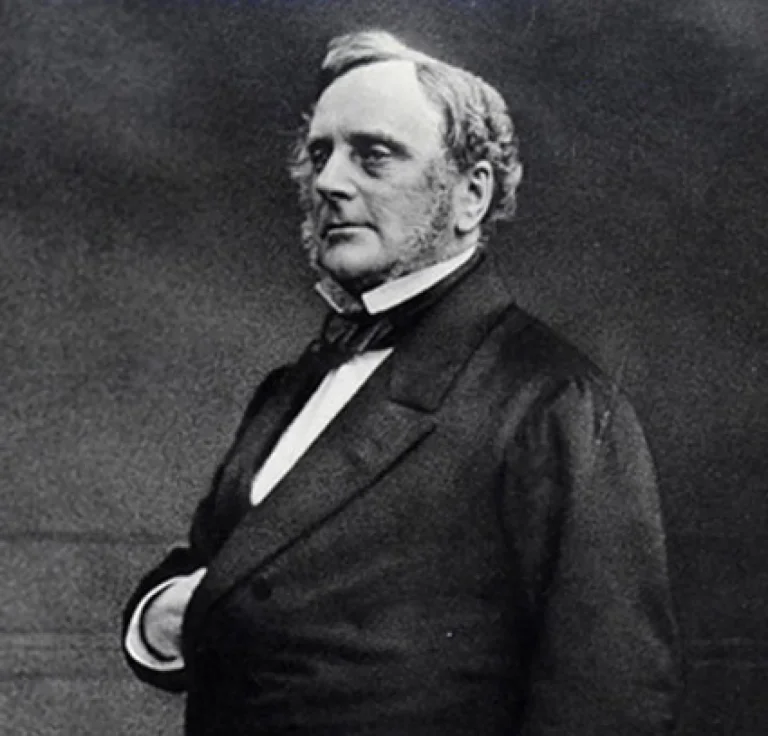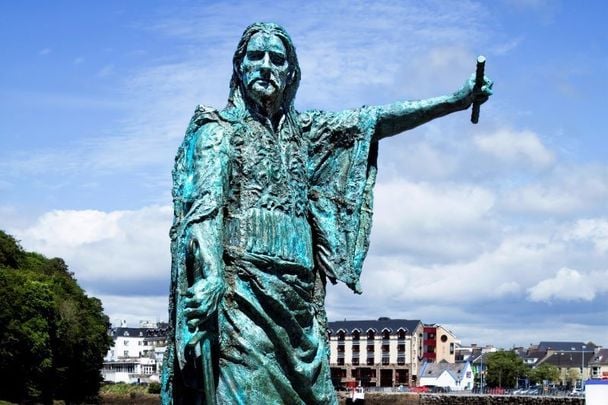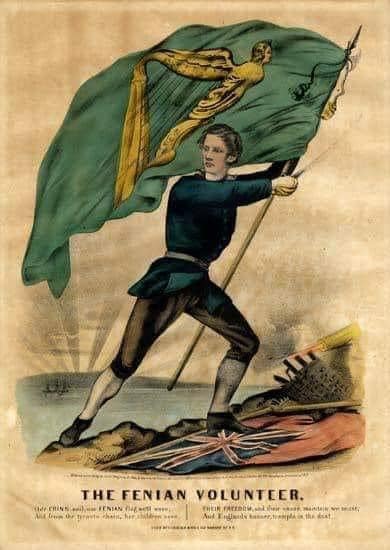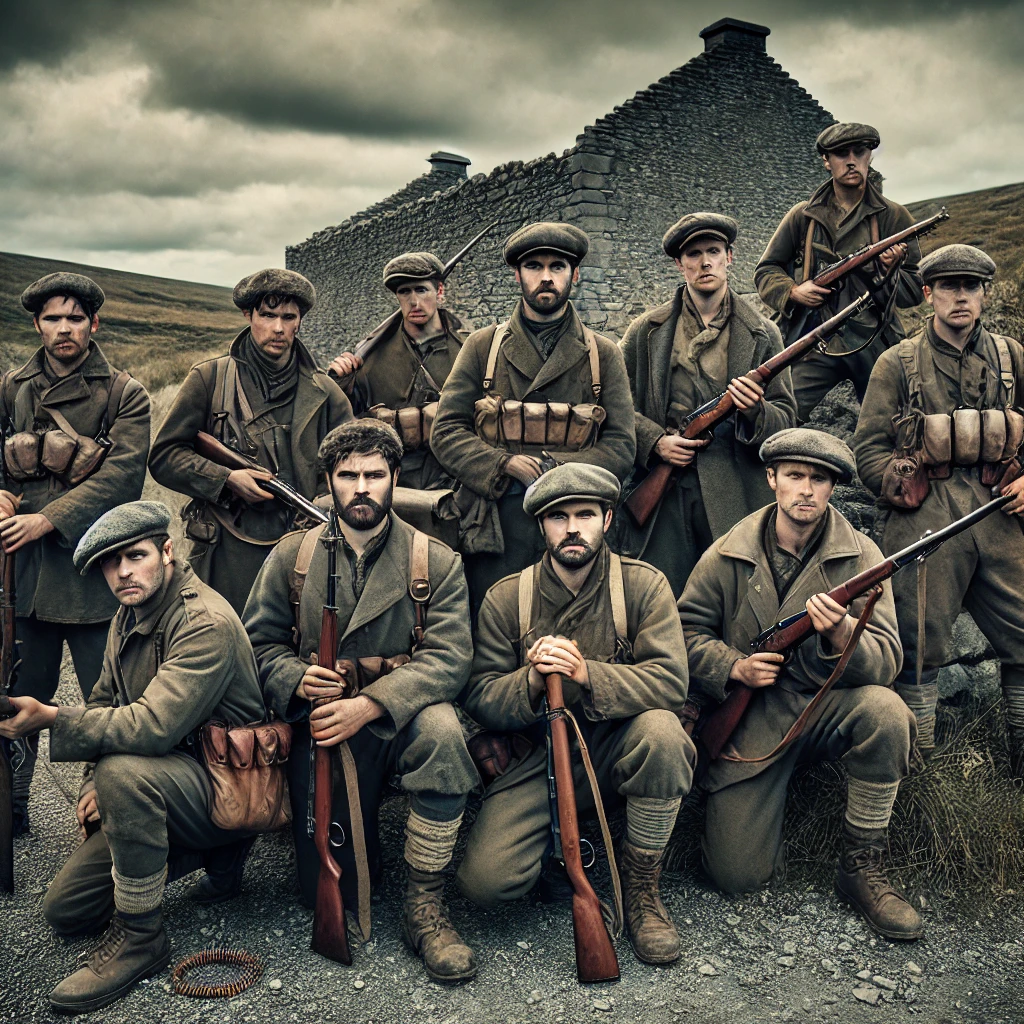
In the shadows of war and empire, on a cool spring morning in March 1916, Ireland stirred from silence. March 12, 1916, became a date of quiet urgency, whispered in coded messages and carried on the boots of revolutionaries across the country. It was a day that Irish Volunteers mobilized, not in parades or speeches, but in preparation for the boldest act of defiance Ireland had seen in centuries — the Easter Rising.
While not yet the flashpoint that shook Dublin’s cobblestones in flame and rifle fire, March 12 marked a subtle turning point: a calm before the storm, a gathering of purpose. Ireland was readying itself for a rebellion that would crack open the doors of freedom — and forever scar the soul of the empire that ruled her.
For deeper context on Ireland’s revolutionary heritage, explore the legacies of Michael Collins, Dan Breen, The IRA Squad, Eamon de Valera, and Ireland’s diaspora stories at Irish Immigration.
The Gathering Storm: What Happened on March 12, 1916?
As Europe bled out in the trenches of the First World War, Ireland — technically under British rule — sat on a powder keg of unresolved history. On March 12, 1916, a secret mobilization of Irish Volunteers occurred across the country.
Though not yet an open call to arms, March 12 served as a trial run, a rehearsal, a clandestine test of readiness for what was to come during the Easter Rising in April.
Units began conducting coordinated drills, organizing weapons caches, and finalizing dispatch lines between Dublin, Cork, Limerick, and Galway. The quiet discipline of these exercises was a signal to the Volunteer command: the flame was ready — now only a spark was needed.
Who Were the Irish Volunteers?
Formed in 1913 in response to the Ulster Volunteer Force, the Irish Volunteers were nationalist citizens determined to defend Home Rule — and eventually, Irish independence. By 1916, the group had evolved into an underground paramilitary force, working in tandem with the Irish Republican Brotherhood (IRB) and a radicalized wing of Sinn Féin.
Led by men like Patrick Pearse, Tom Clarke, Seán Mac Diarmada, and Éamonn Ceannt, these Volunteers were poets and teachers, farmers and tradesmen — but all prepared to die for an Ireland free from British dominion.
March 12: An Echo of Discipline Before Defiance
The mobilization wasn’t loud. There were no fanfares, no proclamations — just the echo of marching feet on rural lanes and whispered briefings in candlelit halls. From Enniscorthy to Athenry, from Tralee to the backstreets of Dublin, the message was clear:
“Be ready.”
Weapons were inspected. Maps studied. Sentries trained. Wordless solidarity passed between Volunteers in makeshift barracks and field drills.
It was more than a rehearsal. It was the shaping of a revolution.
Mobilizing for Easter: What Were They Preparing For?
Unknown to most of the rank-and-file Volunteers on March 12, a date had already been etched into the minds of the Rising’s leaders: Easter Monday, April 24, 1916.
They were preparing for a coordinated uprising, to take key locations across Dublin:
- The GPO (General Post Office)
- Boland’s Mill
- Jacob’s Factory
- St. Stephen’s Green
- Four Courts
And in the countryside, Volunteers were to disrupt railways, ambush RIC stations, and hold key routes — if not to win militarily, then to send a seismic message to the world: Ireland would not be silent anymore.
Who Was Involved in the March Mobilization?
Though often overshadowed by the dramatic events of Easter Week, March 12, 1916, showcased the coordination and discipline that would define the Rising.
Key figures involved in planning and preparation included:
- Patrick Pearse – Poet, teacher, and future commander at the GPO.
- Joseph Plunkett – The Rising’s military strategist.
- Thomas Clarke – Veteran revolutionary and spiritual father of the Rising.
- James Connolly – Head of the Irish Citizen Army, whose socialist ideology shaped the movement.
- Éamon de Valera – Future president of Ireland, already leading Volunteers in Dublin’s outposts.
These men, along with thousands of unknown farmers, labourers, clerks, and students, were ready to lay their lives down for a dream.
The Role of Women: Cumann na mBan
The March 1916 mobilization was not solely a men’s movement. Cumann na mBan, the women’s auxiliary, played a pivotal role:
- Transporting weapons and dispatches
- Acting as medics and couriers
- Training in first aid, signaling, and tactics
By the time Easter Week arrived, over 200 women would take part in active rebellion — a testament to the inclusive spirit of the revolutionary cause.
A Rising Yet to Rise: Why March 12 Still Matters
Many history books jump from the formation of the Volunteers in 1913 to the gunfire of April 24. But March 12 was the moment Ireland exhaled before the storm. It was the confirmation that rebellion was not just talk or poetry — it was discipline, it was resolve, it was real.
In the shadow of empire, a new Ireland was quietly rising.
Explore More of Ireland’s Revolutionary Soul
To walk through the echoes of that time is to understand not just rebellion, but the heartbeat of a people. For more on Ireland’s revolutionary period, explore:
Final Thoughts: March 12 — The Quiet Before the Gunfire
History is not just shaped by battles and speeches. It is shaped by quiet moments of resolve, the silent discipline of a people preparing for freedom.
March 12, 1916, is one such moment — a whisper in the chronology of Irish history, yet one that carried the weight of revolution.
As Pearse would later say before he was executed at Kilmainham:
“The fools, the fools, the fools! — they have left us our Fenian dead, and while Ireland holds these graves, Ireland unfree shall never be at peace.”
And on March 12, the Irish Volunteers stood in quiet readiness — and peace was never an option again.
